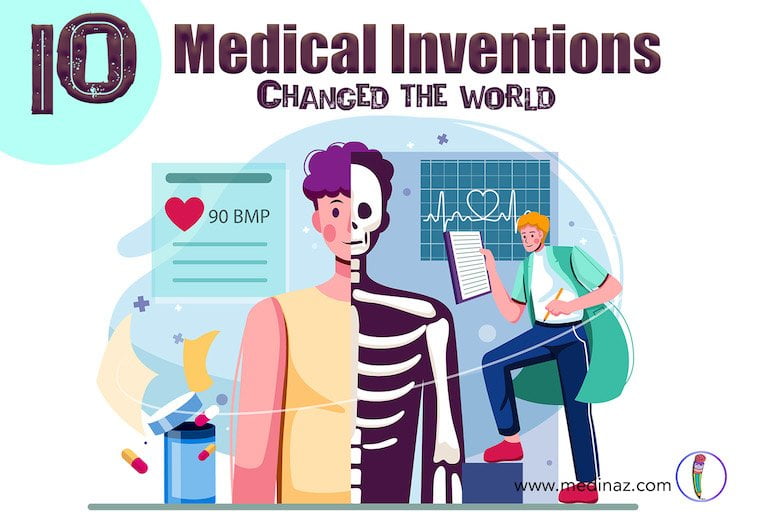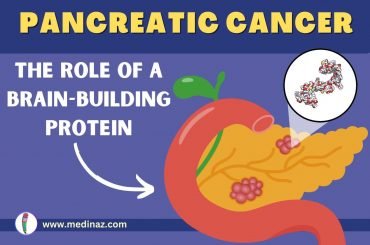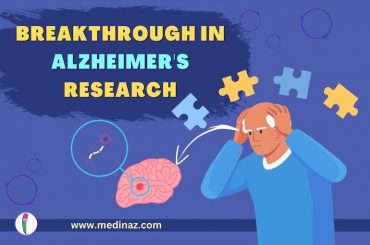10 incredible medical Inventions that changed the world
Medical breakthroughs have the power to transform the way we diagnose, treat, and prevent diseases. Antibiotics revolutionized the way we treat infections and artificial intelligence is improving patient care. These advances have had a profound impact on healthcare and have saved countless lives.
In this blog, we will take a look at 10 incredible medical breakthroughs that changed the world. From the discovery of penicillin to the development of stem cell therapy, these medical innovations have had a lasting impact on the field of healthcare and continue to shape the way we approach medical treatment.
Table of Contents
Penicillin:
The discovery of penicillin by Alexander Fleming in 1928 revolutionized the field of medicine and transformed the way we treat infections. Prior to the discovery of penicillin, infections were often fatal and there were few effective treatment options available.
Penicillin, the first antibiotic, changed that by effectively killing bacteria and preventing the spread of infections. Today, penicillin and other antibiotics are widely used to treat a wide range of infections and save countless lives every year.
Polio vaccine a great Medical Inventions:
The polio vaccine, developed by Dr. Jonas Salk in the 1950s, has played a crucial role in eradicating polio from most parts of the world. Prior to the development of the vaccine, polio was a widespread and debilitating disease that affected millions of people, particularly children.
The polio vaccine has been so effective that it has virtually eliminated the disease in many parts of the world, and efforts are ongoing to eradicate it globally.
Cardiac catheterization:
Cardiac catheterization, a medical procedure that allows doctors to diagnose and treat heart conditions, has greatly improved the lives of millions of people around the world. Developed in the 1950s, this procedure involves inserting a thin, flexible tube into a patient’s blood vessels and using it to access the heart and diagnose or treat various heart conditions.
Cardiac catheterization has revolutionized the way we diagnose and treat heart conditions, and it has greatly improved the survival rates of patients with heart disease.
CT scans a great Medical Inventions:
CT (computed tomography) scans, also known as CAT (computerized axial tomography) scans, are a medical imaging technique that allows doctors to see detailed images of the inside of the body. Developed in the 1970s, CT scans have revolutionized the way we diagnose and treat a wide range of medical conditions, including cancer, heart disease, and brain injuries.
In vitro fertilization (IVF):
In vitro fertilization (IVF) is a medical procedure that allows couples who are struggling with fertility issues to have children. IVF involves fertilizing an egg outside of the body and then transferring the fertilized egg into the uterus. This medical breakthrough has helped millions of couples around the world to have children and has revolutionized the field of fertility treatment.
Stem cell therapy:
Stem cells are a type of cell that has the ability to develop into many different types of cells in the body. It involves using stem cells to treat or repair damaged tissue or organs. This medical breakthrough has the potential to revolutionize the way we treat a wide range of medical conditions, including heart disease, diabetes, and spinal cord injuries.
Medical Inventions CRISPR:
CRISPR (clustered regularly interspaced short palindromic repeats) is a revolutionary gene-editing technology that has the potential to change the way we treat and prevent a wide range of genetic diseases. It allows scientists to precisely edit specific sections of DNA, which could potentially lead to new treatments for conditions such as sickle cell anemia, cystic fibrosis, and many others.
Artificial intelligence in healthcare:
Healthcare professionals are increasingly using artificial intelligence (AI) to improve patient care and increase efficiency. AI can analyze medical data, predict patient outcomes, and assist in diagnosing and treating diseases. This medical breakthrough has the potential to greatly improve the quality of healthcare and make it more accessible to people around the world.
3D printing in healthcare:
3D printing is a revolutionary technology that allows the creation of physical objects from digital designs.
There are several uses of 3D printing in healthcare, including:
- Creating custom prosthetics and orthotics: Doctors and other healthcare professionals can use 3D printing to create custom prosthetics and orthotics tailored to the specific needs of each patient.. This can greatly improve the comfort and functionality of these devices, and can make them more affordable for patients.
- Printing surgical instruments: 3D printing can be used to create specialized surgical instruments that are tailored to the needs of specific procedures. This can reduce the time and cost of these procedures, and can also improve patient outcomes.
- Creating models for surgical planning: 3D printing can be used to create detailed models of patient anatomy, which can be used to plan and practice complex surgeries. These models can help surgeons better understand the specifics of each case and can improve the accuracy of surgical procedures.
- Printing implantable medical devices: Doctors and other healthcare professionals can use 3D printing to create implantable medical devices such as stents and bone replacements customized to fit the specific needs of each patient, which can improve patient outcomes.
- Printing tissue and organs: Researchers are currently working on using 3D printing to create functional tissue and organs for transplantation. This has the potential to revolutionize the way we treat patients with organ failure and could greatly reduce the number of deaths due to organ shortages.
Anaesthesia:
In Boston on October 16th, 1846, doctors lead by Dr. Morton, performed the first-ever surgical procedure using anaesthesia to remove a tumor from a patient’s neck.
The invention of anaesthesia has had a profound impact on the field of medicine and has changed the way we approach surgery and other medical procedures. Prior to the discovery of anaesthesia, surgery was a highly painful and risky procedure, and many patients were unwilling to undergo it. The invention of anaesthesia, which allows doctors to numb pain and make patients unconscious during surgery, made surgery much safer and more tolerable for patients.
This medical breakthrough has greatly improved the quality of healthcare and has saved countless lives by making it possible to perform surgery without causing undue suffering to patients. Today, anaesthesia is an essential part of modern medical practice and is used in a wide range of medical procedures.
Check other Medinaz Informative Blogs
A Visual Learning Platform





